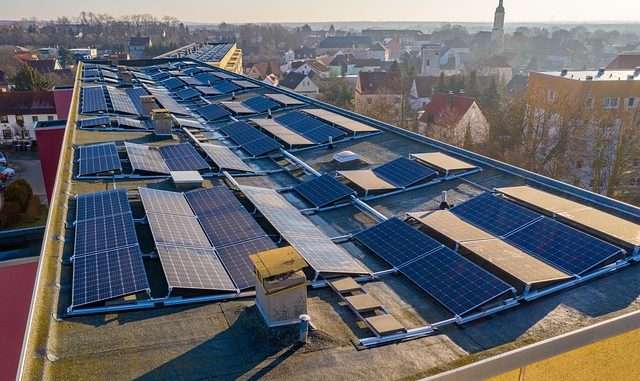
The real estate sector, a critical contributor to global emissions, is on the cusp of an evolutionary shift towards sustainability, with green leases heralding a new chapter in property management. As buildings stand accountable for roughly 40% of worldwide emissions, the sector’s move to green leases marks a significant transition to environmentally responsible practices, positioning it as a pivotal player in the quest to reduce the carbon footprint and combat climate change.
At the heart of this movement is the innovative concept of green leases, which serve as a structured framework promoting collaboration between property owners and tenants. This partnership is fundamental to the adoption of sustainable practices, from improving energy efficiency to reducing waste. By establishing a mutual commitment to environmental stewardship, green leases facilitate a united front in the pursuit of eco-friendly initiatives, thereby fostering a significant reduction in the environmental impact of the real estate sector.
A recent 2023 survey by Knight Frank underscores the unanimous support for green leases among investors as a strategy to meet Environmental, Social, and Governance (ESG) targets. This paradigm shift extends beyond regulatory requirements, reflecting a conscious recognition of the integral role sustainability plays in asset management and value. Leading this charge, companies such as UBS United Kingdom exemplify how integrating sustainability into business operations can yield increased value and returns, alongside notable environmental benefits.
Despite the clear advantages, the widespread implementation of green leases faces notable obstacles. The prevalence of short lease terms, particularly in the UK, Ireland, and the Netherlands, poses a challenge to the execution of long-term sustainability projects. The industry also grapples with the “split-incentive” issue, where landlords and tenants often have divergent priorities, especially in terms of investments in sustainability. Nonetheless, green leases present a pragmatic approach, promoting a shared sense of responsibility and ensuring that environmental goals are collaboratively met.
A pivotal aspect of green leases is their role in the decarbonisation of existing buildings. With regulations like the UK’s Minimum Energy Efficiency Standards (MEES) compelling commercial landlords to improve building performance and slash emissions by 2030, green leases are instrumental. They catalyse the transformation of buildings to meet greener standards, thus supporting compliance and propelling the sustainability agenda.
The significance of green leases transcends mere regulatory compliance. They represent a holistic approach to building management, where environmental objectives align with both landlords’ and tenants’ goals, enhancing asset value. This embodies the potential for harmonising environmental conscientiousness with economic success, showcasing the compatibility of these once-considered divergent aims.
The Knight Frank survey’s revelation of the unanimous adoption of green leases by investors marks a critical inflection point. It mirrors the growing recognition among stakeholders of the vital role real estate plays in the environmental narrative. Green leases embody a spirit of cooperation and a shared dedication to sustainability that not only reshapes owner-occupant dynamics but also establishes new benchmarks within the industry.
As the real estate sector navigates this pivotal juncture, the adoption of green leases signifies a united stride towards environmental responsibility and ethical property management, signalling the dawn of a new era in real estate sustainability. The trend towards green leases represents a substantive shift within the sector, providing a practical avenue for realising sustainability objectives and diminishing the impacts of climate change.
While the path to universal application of green leases may be fraught with challenges, the potential benefits are substantial. As this trend continues to accelerate, it becomes clear that green leases are not a makeshift remedy but a sustainable solution for collaborative, greener futures in real estate. The industry’s commitment to green leases is a testament to its readiness to play a decisive role in forging a sustainable future, whether through regulatory compliance or the pursuit of enhanced asset value.


Be the first to comment